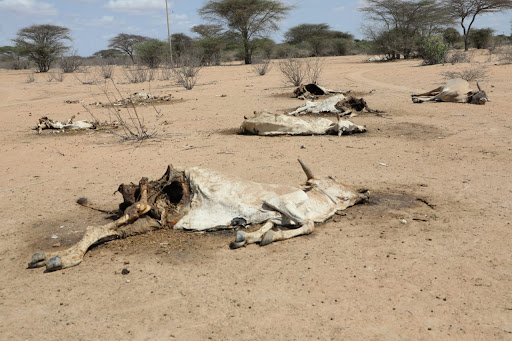

Over 158,000 people across five counties are set to benefit from a new project launched by the World Food Programme (WFP) and the Republic of Korea’s Ministry of Foreign Affairs (MoFA).
This initiative aims to enhance resilience and food security for vulnerable families in Samburu, Mandera, Tana River, Turkana, and Baringo Counties.
The project is backed by a contribution of Sh646.3 million (US$5 million) from MoFA.
This funding will help to build resilience and improve food security for communities in Kenya’s arid and semi-arid regions.
Lauren Landis, WFP’s Country Director in Kenya, highlighted the critical importance of this contribution, especially as people in these regions face the combined risks of both droughts and floods.
“This project will provide communities with the tools and resources needed to prepare for, and build sustainable livelihoods,” Landis said.
“The Republic of Korea's commitment to supporting vulnerable families in Kenya is truly commendable.”
Landis also stressed the significance of strengthening early warning systems, especially with below-normal rainfall expected for the March-May 2025 rainy season.
Early preparation for potential droughts or floods is vital to helping both communities and the government respond effectively.
The Kenya Meteorological Department's climate outlook for March- May 2025 indicates a varied rainfall pattern.
Near to above-average rainfall is expected over the Lake Victoria Basin, South Rift Valley, parts of the Highlands West of the Rift Valley, and some areas of the Southeastern lowlands and extreme northern northwestern Kenya.
However, near to below-average rainfall is forecasted over the Central Rift Valley, the Highlands East of the Rift Valley (including Nairobi County), the Northwest, the Coastal region, the Southeastern lowlands, and isolated areas in the Highlands West of the Rift Valley.
The northeastern parts of Kenya and the north coast are expected to experience below-average rainfall.
Landis emphasised that this partnership will support more than 158,000 smallholder farmers, pastoralists, women, and youth.
Through the project, these communities will be assisted in restoring degraded ecosystems, creating economic opportunities, and strengthening early warning systems for accurate and timely forecasts in the targeted counties.
“The Republic of Korea recognises the urgent need to build resilience and food security in Kenya,” said Nam Sangkyoo, Deputy Ambassador of the Republic of Korea to Kenya.
“Through this partnership with WFP, we are empowering communities to break the cycle of crises and build a future where they can thrive.”
Nam added: “This contribution is part of a broader effort by Korea to support WFP’s work in Kenya. Previous investments, including resilience projects funded by the Korea International Cooperation Agency (KOICA) and rice assistance for refugees from the Ministry of Agriculture, Food, and Rural Affairs (MAFRA), reflect Korea’s longstanding commitment to helping Kenya's vulnerable populations.”


